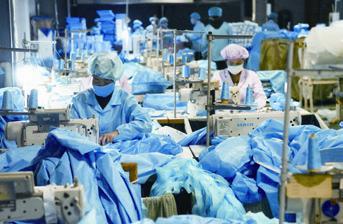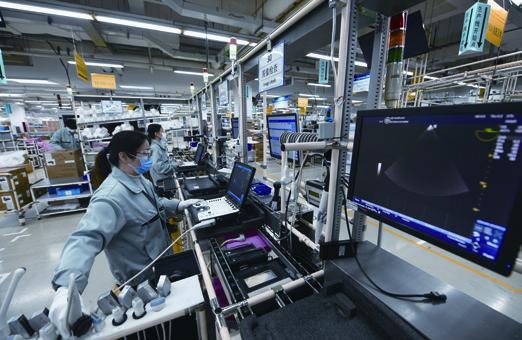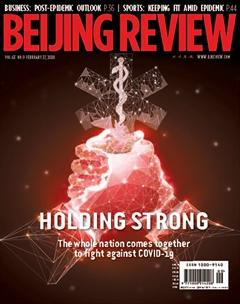Bouncing Back


Beijing Review: In recent interviews with Chinese media outlets, you expressed optimism on the prospects of the Chinese economy and predicted a sharp rebound once the virus is under control. Where do you think the resilience of the Chinese economy comes from?
Stephen Roach: While the Chinese economy has slowed to a virtual standstill in early 2020 due to the impacts of COVID-19, this devastating disease should not impair the underlying strength of the Chinese economy. In my opinion, that strength reflects four key economic transitions: from investment- and export-led growth to consumer-driven growth; from manufacturing to services; from surplus saving to saving absorption and using that drawdown of domestic saving to fund Chinas social safety net and boost discretionary household consumption; and from imported to indigenous innovation.
As long as the government continues to focus its reform strategy on these key transitions, once the virus runs its course, which remains my strong expectation for the second half of 2020, these transitions, in conjunction with recent stimulus actions by the Peoples Bank of China (PBC), will play a decisive role in providing a strong post-virus impetus to the Chinese economy.
You were in China during the 2003 severe acute respiratory syndrome (SARS) outbreak. What are the differences in the Chinese economy today? Is it more resilient or more vulnerable?
Compared to conditions prevailing in 2003, the Chinese economy today is far bigger, better balanced and more globally important. In renminbi terms, the Chinese GDP is about seven times its size 17 years ago. Its share of the world GDP, as measured by the International Monetary Funds (IMF) purchasing power parity metric, currently stands at 19.7 percent, fully 2.3 times the 8.7-percent share in 2003. At the same time, it is less dependent on manufacturing, as the secondary share of the Chinese GDP fell from 45.6 percent in 2003 to 40.7 percent in 2018, while a surging service sector boosted the tertiary share of the economy by 10 percentage points from 42 percent in 2003 to 52 percent in 2018.
With the broader world economy mired in an unusually anemic post-crisis recovery since the global fi nancial crisis of 2008, Chinas ongoing growth has accounted for fully 37 percent of the cumulative gains in global output since 2008. Notwithstanding the serious short-term disruptions associated with COVID-19, todays rebalanced Chinese economy is far more resilient than it was back in the SARS days. At the same time, with the world far more dependent on China today than it was back then, shortterm disruptions in the Chinese economy are bound to have a more serious impact on global growth. When China sneezes, todays world is far more at risk of catching a bad cold than it was in 2003.
What kind of measures do you think the government could take to facilitate an economic rebound?
At this point in time, the highest priority for government policy must be virus containment, addressing modern Chinas most serious public health emergency. The economy comes second, and fortunately for China, it is strong enough to endure even this serious shock.
There is, of course, very little that traditional countercyclical policy measures—monetary and fi scal, alike—can do to offset the severe economic pressures associated with quarantines and travel restrictions. The actions taken thus far by the PBC are important to stabilize financial markets in the event of another sharp drop such as that which occurred on February 3. Barring that possibility, stimulus should add fuel to any post-virus rebound in the economy.

With the pre-virus Chinese economy having slowed to a 27-year low of 6-percent growth in late 2019, Chinas policymakers are wise to err on the side of stimulus. At the same time, it would be imprudent to back away from the critical deleveraging campaign that has been such a high priority for the Chinese leadership over the past three and a half years. Once the virus is contained, the natural forces of recovery should take hold, comparable to those that occurred in the aftermath of SARS in 2003. By staying focused on public health imperatives and bringing COVID-19 under control as soon as possible, the Chinese economy should be well positioned for a solid rebound in the second half of 2020.

What impact do you think this outbreak will have on the global economy? How would a Chinese rebound help the world economy?
With China accounting for about 20 percent of the global GDP, a 2-percentage-point shortfall in annualized Chinese GDP growth—a distinct possibility in the fi rst half of 2020—could knock approximately 0.5 percentage point off annualized world GDP growth during the first and second quarters of 2020. That could be problematic for a global economy that has already slowed into the danger zone; indeed, world GDP grew by just 2.9 percent in 2019, according to the IMFs January 20 update, only 0.4 percentage point above the widely accepted 2.5-percent global recession threshold.
With European industrial output beginning to weaken late last year and with the Japanese economy contracting much more sharply than expected in the fi nal period of 2019 due largely to the second installment of a consumption tax hike, the global e conomy was not exactly on firm footing before the sharp disruption to the Chinese economy. All this means that COVID-19, together with its collateral impacts on neighboring countries through supply chain and fi nished goods trade linkages, could heighten fi nancial market fears of global recession during the fi rst half of 2020.
What is your perspective on the long-term prospects of the Chinese economy? Do you think this public health emergency will lead to the “middle-income trap” for the country?
China faces many challenges in its daunting aspirations to push ahead on its twin centenary development goals. The integrity of its public health system is necessary but not suffi cient for China to stay the course. It underscores the safety net constraint that has long encouraged fear-driven precautionary saving by Chinese households, thereby inhibiting more vigorous growth in discretionary personal consumption.
The “middle-income trap” is less about disease control and public health and more about the critical shift from imported to indigenous innovation. This, of course, has become a major area of dispute in the trade confl ict with the United States, which strikes at the heart of many of Chinas most important pillars of technological prowess: intellectual property rights, technology transfer, cyber security and access by Chinas leading technology companies such as Huawei and ZTE to critical U.S.-made components such as semiconductor chips.
The conflict with the United States has been an obvious and important wakeup call for Chinas aims to build a self-sustaining culture of indigenous innovation. There are many encouraging signs of extraordinary progress in achieving this objective over the past several years, especially in key applications industries such as e-commerce, fintech, life sciences and, of course, artifi cial intelligence. The outbreak of COVID-19 is a grim reminder that technological prowess is not an end in and of itself. If China seizes the opportunity to convert newfound prowess in indigenous innovation into a higher-quality growth experience, complete with a state-of-the-art public health system, it will be much better positioned to avoid the long-feared setbacks of the so-called“middle-income trap.”

